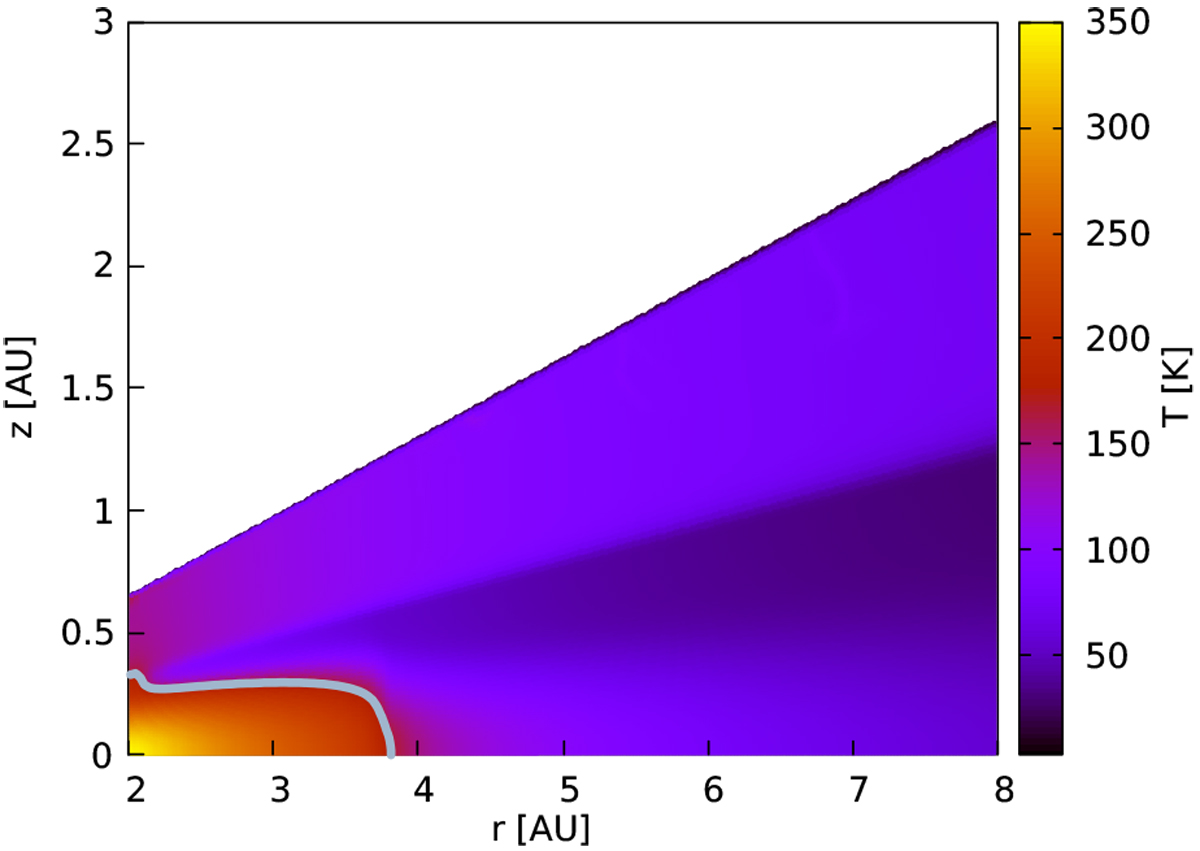Fig. B.1

Disc temperature as a function of orbital distance and vertical distance to the midplane for the disc that features α = 5 × 10−3, a water abundance of 50%, a solid-to-gas ratio of 1%, and a transition in the dust fragmentation velocity from 1 to 5 m s−1 (Fig. 3). The ice line is indicated as a grey line. The disc is vertically isothermal in the outer regions (not shown), where stellar irradiation dominates over viscous heating.
Current usage metrics show cumulative count of Article Views (full-text article views including HTML views, PDF and ePub downloads, according to the available data) and Abstracts Views on Vision4Press platform.
Data correspond to usage on the plateform after 2015. The current usage metrics is available 48-96 hours after online publication and is updated daily on week days.
Initial download of the metrics may take a while.


